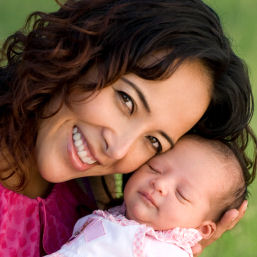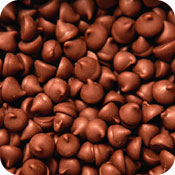 New parents often anticipate the moment they first get to hold their newborn child in their arms. While they love their babies and think they're precious and perfect, they might not be as photogenic, shall we say, in their first few hours and days as parents might expect. Babies are squishy, red and wrinkled when they arrive in this world--and that's completely normal!
New parents often anticipate the moment they first get to hold their newborn child in their arms. While they love their babies and think they're precious and perfect, they might not be as photogenic, shall we say, in their first few hours and days as parents might expect. Babies are squishy, red and wrinkled when they arrive in this world--and that's completely normal! Wondering what else to expect when your newborn arrives? Read on to find out all about your newborn baby's unique appearance and all the normal abnormalities that your little one might experience. Flat Face At birth, portions of your baby's face might be slightly flattened or pressed in. This is caused by positioning within the womb, as well as the tight conditions present during labor and delivery. The flattened areas should round themselves out within a few weeks. Disproportionate Body During the first few weeks, baby's limbs may appear much too short for his torso. Keep in mind that your child's body may develop in different stages, and they will seldom happen all at once. Your baby's limbs should catch up with the rest of his body within a few weeks. Large, turned-out feet and overlapping toes are also to be expected at this stage of development and will also eventually even out. Cone-Shaped/Swollen Head Many babies are born with a cone-shaped head because of the tight squeeze he felt during his trip through the birth canal. This conical shape should round out within one or two weeks. Your child may also have a condition known as Caput or Caput succedaneum, which is swelling on the top of the head and around the scalp caused by pockets of fluid that pool together during labor and delivery. This will go away on its own. Your baby may also have "goose eggs" on his head, which are bumps caused by blood vessels beneath the scalp that broke during the birthing process. It is normal for these "eggs" to increasingly swell during your child's first week of life, and they can take up to two or three months to disappear. Puffy Eyes It is very common for babies to have swollen or puffy eyes a few days after birth because of the pressures caused by labor and delivery. Her eyes may also appear red and blood-spotted, which could be side effects of medications given to prevent infections. Most of the puffiness should subside within three days, but the red blood spots might linger for up to three weeks. Milia Milia (or skin bumps) are very small bumps that are usually yellow or white in color that can appear on the face of your newborn. They are generally caused by blocked skin pores. It is very important not to pick at or squeeze milia, and it is best to avoid treating it with lotions and creams. When your baby is about one to two months old, her pores will begin to open up more, and the milia will disappear naturally. Birthmarks Like a bright smile, fingerprints or a trademark giggle, birthmarks are another feature that makes your baby unique! There are many kinds of birthmarks, and most of them are nothing to worry about. Some may disappear with time, while others may be with your child for life. Here is a list of some of the most common markings that you might find on your newborn:
Swollen Genitals Don't be alarmed if your child's genitals are red or swollen the few days after birth. This is due to fluid retention and hormonal changes that your child is experiencing due to his or her separation from the womb. The swelling should go down within one week of birth. It is also important to note that baby girls might excrete white and/or bloody mucus from her vagina for a week or so after delivery. This is also caused by hormonal shifts and should stop within one week. Jaundice Jaundice is characterized by a yellowish or pink skin tone, and it is one of the most common ailments that newborns experience. According to the Children's Liver Disease Foundation, 90% of newborns will develop jaundice within a few days of birth. Jaundice usually reaches its peak on the fourth day of your child's life and then will gradually disappear by two weeks of age. Although jaundice is generally harmless, it is important to keep an eye out for additional symptoms that may indicate liver problems in your baby. Check your child's urine and stools; his urine should be clear, and his stools should be green or daffodil yellow in color if breastfed, and green or mustard-colored if bottle-fed. If the urine is yellow and the stools are pale, it could be a sign of liver trouble and you should alert your physician immediately. In breastfed babies, jaundice tends to be worse and last longer. Some medical providers will encourage moms to avoid breastfeeding for a few days and to supplement with formula. This can cause problems with breastfeeding success and, unless advised by a health-care provider, isn't necessary. Contact your child's pediatrician or health-care provide if you think the jaundice is worsening or if you have any questions about breastfeeding. Acne When your baby is three to five weeks old, he may develop a red, oily rash that is rough to the touch. Newborn acne usually appears predominately on the face. Do not treat the rash with creams or lotions. Instead, keep your baby's fingernails trimmed short to avoid scratching and wait for your child's skin pores to open up as he further develops, which should happen at one or two months old. Eye Color It is normal for most light-skinned babies to be born with blue-gray eyes. Your child's eye color may change over the first year or may stay blue or intensify in color. Dark-skinned babies are usually born with brown eyes that often do not change in color. To encourage your baby to open his eyes, avoid harsh lighting situations and keep the lights in the nursery at a dim setting. Although most parents cannot help but imagine a perfect baby upon delivery, this is not always the case! By recognizing the small common abnormalities that newborns may possess, you can enter your journey of parenthood with a more prepared and realistic mindset. Your little angel will soon look just as you imagined him to be! Selected sources: Children's Hospital of the King's Daughters Medline Plus |
What's a Newborn Supposed to Look Like?
Baby is Squishy, Red and Wrinkled--Is That Normal?
Page 1 of 1





Member Comments